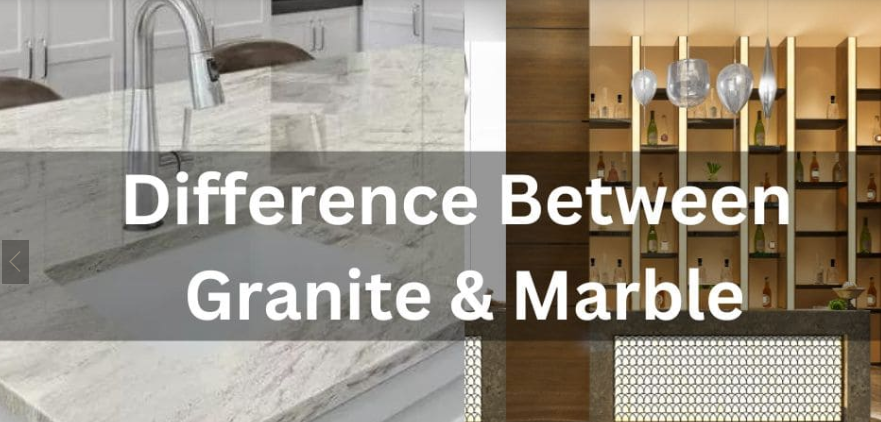Choosing the right natural stone for your home or project is a significant decision. It impacts aesthetics, functionality, and long-term value. Among the most popular choices, the Marble vs. granite – which is best for home interiors debate stands out. Both are stunning, natural materials quarried from the earth, yet they possess distinct characteristics that make them suitable for different applications and lifestyles.
At A Class Marble, we understand the allure and intricacies of natural stone. We've guided countless clients through the selection process, helping them weigh the pros and cons. This comprehensive guide aims to demystify the Choosing between marble and granite countertops comparison, providing you with the knowledge to make an informed choice that perfectly aligns with your vision and needs.
Understanding the Contenders: What is Marble?
Marble is a metamorphic rock, formed when limestone is subjected to immense heat and pressure deep within the earth. This process causes the calcite crystals in the limestone to recrystallize, resulting in marble's characteristic veining and often luxurious, shimmering appearance.
- Formation: Metamorphic transformation of limestone.
- Key Mineral: Primarily Calcite.
- Appearance: Known for its elegant, flowing veins, swirls, and a wide spectrum of colours – from the classic whites and greys (like Carrara or Calacatta) to greens, pinks, blacks, and golds. The pattern is typically less uniform and more dramatic than granite.
- Feel: Often perceived as softer and more luxurious.
A Class Marble prides itself on sourcing some of the world's most exquisite marble, showcasing the incredible diversity and beauty this stone offers. Its timeless elegance has made it a symbol of luxury and sophistication for centuries.
Understanding the Contenders: What is Granite?
Granite is an igneous rock, formed from the slow cooling and solidification of magma beneath the Earth's surface. This slow cooling process allows large mineral crystals to form, giving granite its characteristic granular appearance.
- Formation: Igneous, from cooled magma.
- Key Minerals: Primarily Quartz and Feldspar, with smaller amounts of mica, amphiboles, and other minerals.
- Appearance: Typically features a speckled or granular pattern due to the interlocking crystals. It comes in a vast array of colours and patterns, often more consistent than marble's veining. Colours range from blacks and whites to pinks, blues, and reds.
- Feel: Generally feels harder and denser than marble.
Granite's natural toughness and wide variety make it a popular, practical choice for many applications.
Head-to-Head: The Core Marble vs Granite Comparison
Now, let's dive into the critical factors that differentiate these two magnificent stones. Understanding these differences is key to resolving the marble vs granite question for your specific project.
1. Aesthetics and Appearance: Marble vs Granite
This is often the starting point for many homeowners. Both stones are beautiful, but their visual appeal differs significantly.
- Marble: Offers unparalleled elegance and a high-end, luxurious feel. Its distinctive, often dramatic veining creates unique, statement-making surfaces. No two slabs of marble are exactly alike, providing a truly bespoke look. It's often associated with classic, sophisticated designs. If a unique, flowing pattern is your priority in the marble vs granite choice, marble often wins.
- Granite: Provides a more varied, natural, and earthy look with its speckled, crystalline structure. While some granites have waves or patterns, they are generally more uniform than marble veins. Granite offers a vast spectrum of colours and patterns, fitting well into various design styles, from traditional to modern.
Verdict: For pure, classic luxury and unique veining, choose marble. For a wider variety of colours, a more consistent pattern, and a natural, granular look, granite is a strong contender. A Class Marble offers extensive galleries to visually compare the distinct aesthetics in the marble vs granite spectrum.
2. Durability and Hardness: Marble vs Granite Showdown
Durability is a crucial factor, especially for high-traffic areas like kitchen countertops or flooring.
- Marble: Being primarily calcite, marble is softer than granite. On the Mohs scale of mineral hardness (1-10, with 10 being diamond), marble typically ranks between 3 and 5. This means it is more susceptible to scratching from knives, abrasive cleaners, or even heavy pots and pans. It can also chip or crack more easily upon sharp impact compared to granite.
- Granite: Rich in quartz and feldspar, granite is significantly harder, ranking between 6 and 7 on the Mohs scale. This makes it highly resistant to scratches and chipping. It can generally withstand daily wear and tear in busy kitchens better than marble. In the marble vs granite durability test, granite usually comes out on top for resisting physical damage.
Verdict: Granite is the harder, more scratch-resistant, and chip-resistant option, making it ideal for heavy-use areas. Marble requires more care to prevent physical damage.
3. Porosity, Staining, and Etching: Marble vs Granite Challenges
Natural stone is porous to varying degrees, affecting its resistance to staining and damage from acidic substances.
- Marble: Marble is more porous than granite and contains calcite, which reacts with acids. This means acidic substances like lemon juice, vinegar, wine, coffee, or even certain cleaning products can etch the surface. Etching isn't a stain but a chemical reaction that dulls the finish, leaving a lighter or darker mark. Marble can also stain more easily if spills aren't wiped up promptly. Proper sealing is essential for marble and needs to be reapplied periodically (often annually, depending on use).
- Granite: Granite is less porous than marble and generally does not contain calcite, making it much more resistant to etching from common household acids. While it can still stain if spills (especially oil-based) are left for extended periods, it's generally more forgiving than marble. Sealing granite is also recommended to maximize stain resistance, but the frequency may be less often than for marble, depending on the specific type of granite and its use.
Verdict: Granite offers superior resistance to staining and, crucially, etching from acids. This is a major point in the marble vs granite comparison for kitchen countertops. Marble requires diligent cleaning, immediate spill management, and consistent sealing to maintain its appearance.
4. Maintenance and Care: Marble vs Granite Routines
Ongoing maintenance requirements differ significantly between the two stones.
- Marble: Requires gentle care. Clean daily with a soft cloth, warm water, and a pH-neutral cleaner specifically designed for marble. Avoid acidic or abrasive cleaners at all costs. Address spills immediately. Regular sealing (e.g., annually) is crucial to protect against staining and etching. Choosing a honed (matte) finish for marble can make etching less noticeable than a polished finish. A Class Marble provides detailed care instructions for all its marble products.
- Granite: Easier to maintain. Daily cleaning can be done with warm water and mild soap or a granite cleaner. It's less sensitive to acidic spills than marble, although prompt cleanup is always best. Sealing frequency depends on the specific granite's porosity and usage, but it's generally less frequent than marble.
Verdict: Granite is the lower-maintenance option in the marble vs granite matchup. Marble demands more vigilance and specific cleaning protocols.
5. Cost Considerations: Marble vs Granite Investment
The price of natural stone can vary widely based on rarity, origin, colour, and quality.
- Marble: Often perceived as more expensive, especially high-end varieties like Calacatta or Statuario. However, some common marble types (like certain Carraras) can be comparable in price to mid-range granite. The installation cost might also be slightly higher due to its delicate nature. The long-term cost includes diligent maintenance and potential restoration if etching or staining occurs.
- Granite: Offers a broader price range. Common granite varieties can be quite affordable, while exotic or rare granites can be as expensive as, or even more expensive than, some marbles. Installation costs are standard for natural stone. Its durability can mean lower long-term maintenance costs compared to marble in demanding environments.
Verdict: While generalizations are tricky, granite often offers more options at lower price points. However, the marble vs granite cost analysis depends heavily on the specific type chosen. Always get quotes for the specific slabs you are interested in from suppliers like A Class Marble.
6. Applications: Where Marble vs Granite Excel
Considering the properties discussed, where is each stone best utilized?
- Marble: Ideal for areas where luxury and aesthetics are paramount and traffic/use is lighter or where careful maintenance is acceptable. Think bathroom vanities, shower walls, fireplace surrounds, decorative accents, flooring in lower-traffic areas, and baking stations (its cool surface is great for pastry). While usable in kitchens, it requires acceptance of its potential to patina (etch and scratch) over time or exceptionally diligent care.
- Granite: Excellent for high-traffic, heavy-use areas due to its durability and resistance to heat, scratches, and stains (when sealed). Perfect for kitchen countertops, flooring in busy areas, outdoor kitchens, and tabletops.
Verdict: The ideal application heavily influences the marble vs granite decision. Match the stone's properties to the demands of the space.
Making the Final Choice in the Marble vs Granite Dilemma
So, how do you decide? Consider these questions:
- Where will the stone be used? (High-traffic kitchen vs. low-traffic bathroom?)
- What is your tolerance for maintenance? (Are you diligent about cleaning and sealing?)
- What is your primary priority: unique elegance or rugged durability?
- What is your budget? (Consider both initial and long-term costs).
- What look are you trying to achieve? (Classic veining vs. natural speckles?)
There's no single "better" stone – the right choice depends entirely on your specific needs and preferences. The marble vs granite decision is personal.
Why Choose A Class Marble for Your Natural Stone Needs?
Whether your heart is set on the timeless elegance of marble or you're considering the robust beauty of granite (though our name emphasizes our marble expertise, we understand the full spectrum of natural stone), A Class Marble is your trusted partner in India.
- Unrivalled Selection: We source premium quality marble from the world's finest quarries, offering an unparalleled selection of colours and patterns.
- Expert Guidance: Our knowledgeable team provides personalized consultations, helping you navigate the marble vs granite choice and understand the nuances of each stone.
- Quality Assurance: We are committed to providing only the highest quality natural stone, ensuring lasting beauty and value.
- End-to-End Service: From selection to providing care guidance, we support you throughout your project.
Conclusion: Embracing the Beauty of Natural Stone
The marble vs granite comparison highlights the wonderful diversity available in natural stone. Marble offers breathtaking, unique beauty and a touch of luxury, demanding careful maintenance in return. Granite provides exceptional durability, lower maintenance, and a wide array of earthy patterns suitable for the busiest households. By understanding their distinct characteristics – appearance, durability, porosity, maintenance needs, and cost – you can confidently choose the stone that will best enhance your space and suit your lifestyle.


